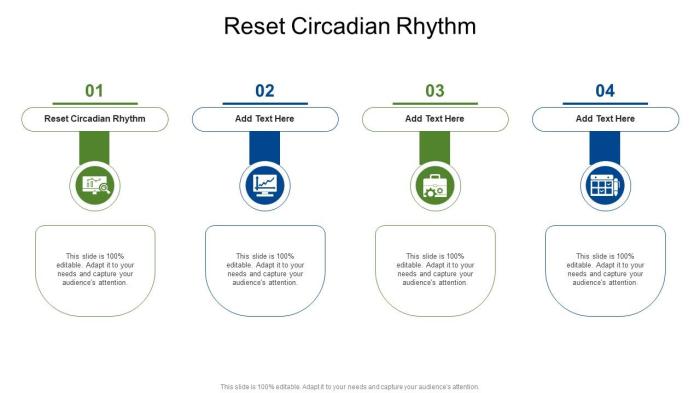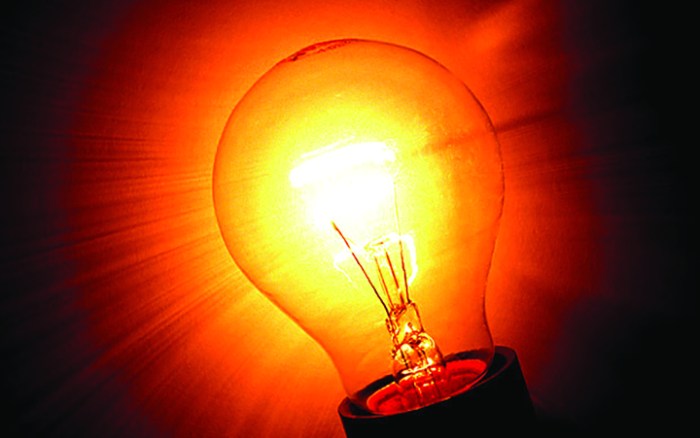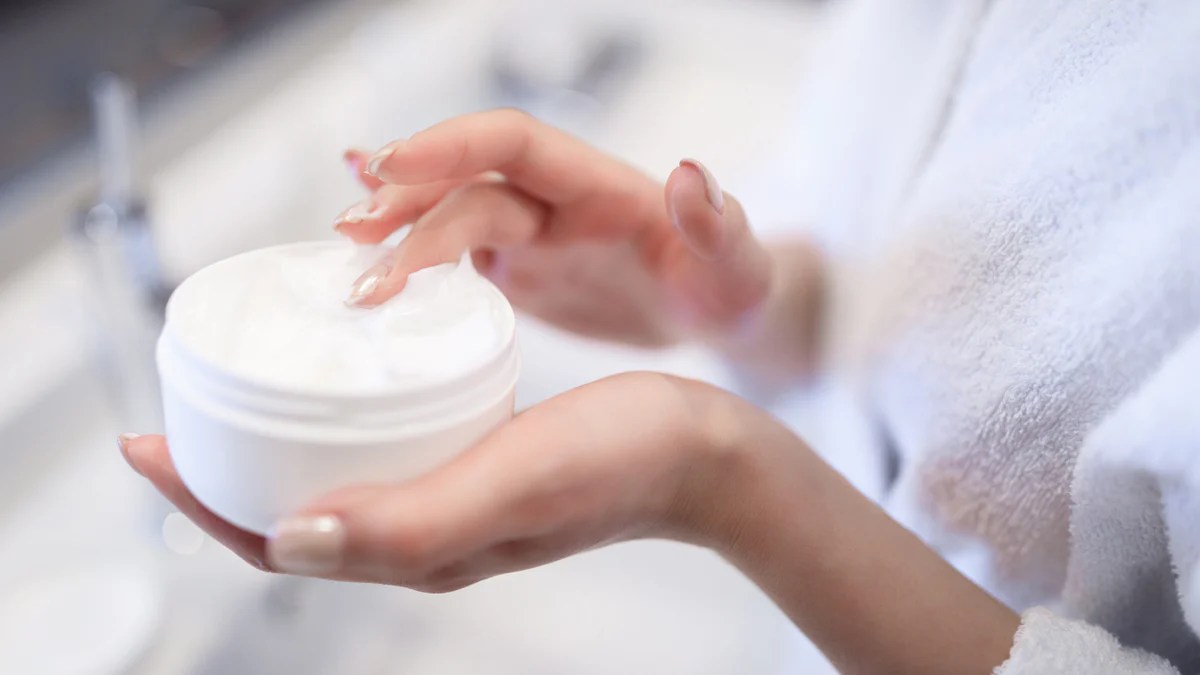How to reset circadian rhythm? This guide delves into the fascinating world of your internal clock, exploring the science behind sleep and the practical steps you can take to regulate your body’s natural sleep-wake cycle. From understanding the fundamental biological process to practical lifestyle changes, we’ll equip you with the knowledge and strategies to reclaim restful nights and energize your days.
We’ll explore everything from the role of light and darkness in regulating your internal clock to the impact of lifestyle factors like jet lag and shift work. We’ll also delve into the effectiveness of light therapy, nutritional approaches, sleep hygiene practices, and lifestyle modifications, along with medical interventions for more severe cases. The journey to a healthy circadian rhythm starts here.
Understanding the Circadian Rhythm

The circadian rhythm is a fundamental biological process that governs our daily cycles of sleep and wakefulness, and influences numerous other bodily functions. It’s an internal clock, finely tuned to synchronize with the Earth’s natural light-dark cycle. This internal clock, deeply embedded within our biology, plays a vital role in regulating our health and well-being. Understanding how it works and how it can be disrupted is crucial for maintaining optimal health.Our bodies operate on a roughly 24-hour cycle, orchestrated by a master clock located in the hypothalamus.
This internal clock, influenced by external cues, dictates when we feel tired, hungry, or alert. The interplay of internal and external factors creates a harmonious rhythm that shapes our daily lives.
The Role of Light and Darkness
Light is the primary external cue that synchronizes our internal clock. Exposure to light, particularly during the day, signals to the brain that it’s time to be awake and alert. Conversely, darkness cues the body to prepare for sleep. Photoreceptors in the retina detect light and send signals to the suprachiasmatic nucleus (SCN), the master clock in the hypothalamus.
The SCN then regulates the production of hormones, like melatonin, which plays a critical role in sleep-wake cycles.
Disruptions to the Circadian Rhythm
Numerous factors can disrupt the delicate balance of the circadian rhythm. Jet lag, shift work, irregular sleep schedules, and exposure to artificial light at night are common culprits. For instance, individuals who work night shifts often experience misalignment between their internal clock and the external environment, leading to sleep deprivation and potential health issues. Traveling across multiple time zones disrupts the natural synchronization of the circadian rhythm, resulting in jet lag, characterized by fatigue, difficulty concentrating, and sleep disturbances.
Importance of Maintaining a Consistent Sleep-Wake Cycle
A consistent sleep-wake schedule is crucial for maintaining a healthy circadian rhythm. Going to bed and waking up around the same time each day, even on weekends, helps to reinforce the internal clock and optimize its function. This consistency promotes better sleep quality, improves mood, and enhances overall health. For example, a regular sleep-wake cycle can significantly impact mental clarity and cognitive function, making tasks more manageable and promoting a more productive day.
The Body’s Internal Clock and its Impact on Bodily Functions
The body’s internal clock, the circadian rhythm, exerts a profound influence on various bodily functions. Hormone production, body temperature, metabolism, and even immune function are all regulated by this internal timing mechanism. For example, the release of cortisol, a stress hormone, typically peaks in the morning, while melatonin, a sleep hormone, is released at night. Maintaining a healthy circadian rhythm helps to ensure these processes function optimally, supporting overall well-being.
Identifying Disruptions to the Circadian Rhythm
Understanding how our internal clocks get thrown off is crucial for optimizing sleep and overall well-being. Disruptions to the circadian rhythm can stem from various lifestyle choices and external factors, impacting our physical and mental health. This section will explore common culprits like jet lag, shift work, and irregular light exposure, and how they disrupt our natural sleep-wake cycle.Identifying these disruptions allows us to implement strategies to better align our internal clocks with the external world, promoting better sleep and improved health.
Common Lifestyle Factors Disrupting Circadian Rhythm
Numerous lifestyle choices can interfere with the delicate balance of our circadian rhythm. Poor sleep hygiene, irregular meal times, and excessive screen time before bed are just a few examples. The consistency of our daily routines significantly impacts our body’s natural sleep-wake cycle.
- Irregular Sleep Schedules: A fluctuating sleep schedule, characterized by inconsistent bedtimes and wake-up times, disrupts the body’s internal clock. The lack of a consistent rhythm makes it challenging for the body to regulate its natural sleep-wake cycle.
- Shift Work: Working non-traditional hours, such as night shifts or rotating schedules, forces the body to adapt to a sleep-wake cycle that conflicts with the natural light-dark cycle. This can lead to chronic sleep deprivation and a multitude of health issues.
- Poor Diet: A diet high in processed foods, sugar, and caffeine can disrupt the body’s natural rhythms, affecting sleep quality and potentially leading to a compromised circadian rhythm.
- Excessive Screen Time: The blue light emitted from electronic devices can interfere with melatonin production, a hormone crucial for regulating sleep. Extended screen time before bed can make it harder to fall asleep and maintain a healthy sleep cycle.
Jet Lag: A Time Zone Disruption
Jet lag is a temporary circadian rhythm disruption caused by rapidly crossing multiple time zones. This misalignment between the body’s internal clock and the new time zone leads to various symptoms.
- Symptoms: Symptoms of jet lag can include fatigue, difficulty sleeping, reduced alertness, digestive problems, and even mood disturbances. The severity of jet lag depends on the number of time zones crossed and the direction of travel.
- Mechanism: When traveling across time zones, the body’s internal clock is forced to adjust to a new schedule. The body’s natural rhythm is thrown off, leading to a mismatch between the internal clock and the external environment. The misalignment can impact the timing of key bodily functions like hormone production and sleep regulation.
Shift Work and its Impact
Shift work, encompassing a wide range of non-traditional work schedules, presents a significant challenge to maintaining a healthy circadian rhythm. Workers in these roles often experience a misalignment between their internal clock and the external world.
- Consequences: Chronic shift work can lead to a cascade of negative health outcomes, including sleep disturbances, an increased risk of accidents, cardiovascular issues, and a compromised immune system.
- Strategies: Workers can implement strategies to mitigate the negative effects of shift work, such as maintaining a consistent sleep schedule as much as possible, controlling light exposure, and adopting healthy sleep hygiene practices.
The Role of Light Exposure at Night
Exposure to light at night, especially from electronic devices, significantly impacts the circadian rhythm. This disrupts the natural production of melatonin, the hormone that regulates sleep.
- Impact on Melatonin: Light exposure at night suppresses the production of melatonin, a crucial hormone for regulating the sleep-wake cycle. This disruption can lead to difficulties falling asleep, staying asleep, and maintaining a consistent sleep schedule.
- Strategies: Strategies for mitigating the effects of nighttime light exposure include limiting screen time before bed, using blue light-blocking glasses, and ensuring a dark sleep environment.
Comparing Sleep Disorders and Circadian Rhythm
Various sleep disorders can have significant impacts on the circadian rhythm. Different sleep disorders manifest in various ways, affecting sleep quality and sleep-wake cycle regularity.
- Delayed Sleep Phase Syndrome (DSPS): Individuals with DSPS experience a delay in their natural sleep-wake cycle, making it difficult to fall asleep at a conventional bedtime. They tend to feel sleepy later in the evening and wake up later in the morning. DSPS often involves a mismatch between the body’s internal clock and the social environment.
- Advanced Sleep Phase Syndrome (ASPS): In ASPS, individuals have a sleep-wake cycle that is advanced relative to the norm. This means they experience an earlier sleep onset and wake-up time compared to the average person.
- Irregular Sleep-Wake Disorder: This disorder is characterized by a lack of a regular sleep-wake schedule, resulting in inconsistent sleep patterns. The inconsistency disrupts the body’s natural sleep-wake cycle and can lead to various health problems.
Resetting the Circadian Rhythm
Reclaiming control over your internal clock is possible. A disrupted circadian rhythm can lead to a cascade of health issues, impacting everything from mood and energy levels to sleep quality and even metabolic function. Understanding the underlying causes and employing the right strategies are key to regaining a healthy sleep-wake cycle. This journey involves conscious adjustments to your lifestyle, fostering a harmonious relationship with your body’s natural rhythms.A well-regulated circadian rhythm is essential for optimal health and well-being.
When this internal clock is out of sync, it can affect various bodily functions. The strategies Artikeld below provide a roadmap for resetting your circadian rhythm, allowing you to regain a natural sleep-wake cycle and experience the numerous benefits of a healthy internal clock.
Creating a Resetting Plan
A comprehensive plan for resetting a disrupted circadian rhythm involves a phased approach. Begin by assessing your current sleep-wake cycle and identifying the factors contributing to the disruption. This might include irregular sleep schedules, excessive screen time before bed, or inconsistent meal times. Once you understand these contributing factors, you can begin the process of gradually adjusting your sleep-wake cycle.
Gradual Adjustment of the Sleep-Wake Cycle
A gradual adjustment is crucial to avoid overwhelming your body. Instead of making drastic changes, implement small, incremental adjustments to your schedule. This approach allows your body to adapt more easily. For example, if your current bedtime is 2:00 AM, shift it to 1:30 AM for the first week, then 1:00 AM the following week, and so on, until you reach your desired bedtime.
Lifestyle Changes for a Healthy Circadian Rhythm
Maintaining a consistent sleep schedule, even on weekends, is paramount for regulating your circadian rhythm. A consistent sleep-wake cycle helps your body’s natural sleep-wake hormones synchronize. Also, limit exposure to screens for at least an hour before bed. Blue light emitted from electronic devices can interfere with melatonin production, a hormone essential for sleep. Additionally, establish a relaxing bedtime routine that signals to your body it’s time to wind down.
This could include taking a warm bath, reading a book, or practicing gentle stretching.
Optimizing Light Exposure for Better Sleep Regulation
Light exposure plays a significant role in regulating the circadian rhythm. Sunlight in the morning helps reset the body’s internal clock. Exposure to natural light during the day can improve alertness and energy levels, while limiting exposure to bright light in the evening can promote better sleep. For example, taking a walk during the day can help regulate your circadian rhythm.
Utilizing Natural Light Exposure
Natural light exposure is a powerful tool for resetting your circadian rhythm. Sunlight contains wavelengths that signal to your body when it’s daytime. By exposing yourself to natural light during the day, you can help regulate your body’s internal clock and improve sleep quality at night. Spending time outdoors during daylight hours, even for a short period, can have a positive impact.
For instance, taking a midday walk or sitting outside during your lunch break can significantly benefit your circadian rhythm.
Light Therapy and its Role in Resetting the Circadian Rhythm
Light therapy, a non-invasive treatment, leverages the power of light to influence the body’s internal clock, helping to regulate the circadian rhythm. By exposing the body to specific wavelengths and intensities of light, individuals can potentially reset their sleep-wake cycle and improve overall well-being. This approach is particularly useful for those experiencing sleep disorders, jet lag, or seasonal affective disorder (SAD).Light therapy works by interacting with specialized photoreceptor cells in the retina, specifically melanopsin-containing ganglion cells.
These cells transmit signals to the suprachiasmatic nucleus (SCN), the master clock of the body’s circadian rhythm. This neural pathway, stimulated by specific light parameters, allows the body to adjust its internal timing mechanisms, promoting a healthier sleep-wake cycle. The efficacy of light therapy is well-documented, offering a gentle and often effective alternative to medication for certain conditions.
Scientific Basis of Light Therapy
The effectiveness of light therapy stems from its ability to stimulate the melanopsin-containing retinal ganglion cells, which, in turn, synchronize the SCN. This synchronization is crucial for regulating the body’s natural sleep-wake cycle. Exposure to specific wavelengths of light, primarily in the blue-spectrum, has been shown to have a strong impact on the circadian rhythm. Studies have demonstrated that light therapy can effectively shift the timing of melatonin secretion, a key hormone regulating sleep.
Methods for Implementing Light Therapy at Home
Implementing light therapy at home is straightforward. The goal is to provide controlled exposure to specific wavelengths of light, typically blue-enriched white light, at appropriate times of day. This can be achieved through specialized light therapy lamps or even by using bright outdoor light. A critical element is consistency. Regular exposure at the same time each day helps to reinforce the desired rhythm.
Potential Benefits of Light Therapy
Light therapy offers a range of potential benefits, including improved sleep quality, reduced symptoms of seasonal affective disorder (SAD), and a better sense of alertness. Some individuals experience a reduced need for sleep medication, a more consistent sleep-wake cycle, and improved mood. Furthermore, it can aid in alleviating symptoms of jet lag, by helping the body adjust to new time zones more quickly.
Resetting your circadian rhythm can be tricky, but focusing on regular sleep schedules and light exposure is key. However, did you know that some neurological symptoms, like those associated with gluten sensitivities, gluten related neurological symptoms and conditions , can significantly disrupt your body’s natural rhythm? Addressing potential underlying issues, like gluten intolerance, is crucial to effectively reset your internal clock.
Consistent sleep hygiene and a balanced diet are often the best approaches for a healthy circadian rhythm.
Potential Risks of Light Therapy
While generally safe, light therapy may pose some risks. Prolonged or excessive exposure can potentially cause eye strain, headaches, or even temporary discomfort. In rare cases, individuals may experience nausea or other minor side effects. It’s crucial to follow the manufacturer’s instructions and consult with a healthcare professional before starting light therapy, particularly if you have any underlying health conditions.
Types of Light Therapy Devices Available
Several light therapy devices are commercially available, each with varying characteristics. These devices range from simple desk lamps to more sophisticated systems designed for specific applications. Choosing the right device depends on individual needs and preferences.
Comparison of Light Therapy Options
| Device Type | Wavelengths | Duration | Intensity | Potential Benefits | Potential Risks |
|---|---|---|---|---|---|
| Light Therapy Lamps | Blue-enriched white light | 15-30 minutes | Variable | Improved sleep, reduced SAD symptoms | Eye strain, headaches |
| Specialized Light Boxes | Broad spectrum, often blue-rich | 30 minutes | High | Effective for SAD treatment, alleviating jet lag | Eye strain, skin sensitivity |
| Wearable Devices | Specially designed light emitters | Variable | Low to moderate | Portability, potential for tailored light exposure | Limited efficacy compared to other devices |
Dietary and Nutritional Approaches: How To Reset Circadian Rhythm
Nourishing your body with the right foods can significantly impact your circadian rhythm, affecting sleep quality and overall well-being. Understanding the connection between diet and sleep is crucial for resetting and maintaining a healthy internal clock. The foods you consume, and when you consume them, can influence the production of hormones like melatonin, which regulates sleep-wake cycles. This section delves into the vital role of specific nutrients and meal timing in optimizing your circadian rhythm.Dietary choices play a crucial role in synchronizing your internal body clock with the natural day-night cycle.
Certain nutrients directly support the production and regulation of hormones associated with sleep, while others can negatively impact your rhythm. Understanding these influences can empower you to make informed choices that support a healthy sleep-wake cycle.
Role of Specific Nutrients
Certain nutrients are essential for a healthy circadian rhythm. Magnesium, for instance, is crucial for the production of melatonin, the sleep-regulating hormone. Calcium, along with magnesium, plays a role in the regulation of nerve impulses and muscle contractions, influencing the transition between sleep stages. Vitamin B6 is involved in serotonin synthesis, a neurotransmitter that impacts sleep quality.
Consuming adequate amounts of these nutrients can contribute to a smoother, more regular sleep-wake cycle.
Foods That Promote Healthy Sleep
A balanced diet rich in specific nutrients is key to supporting a healthy circadian rhythm. Certain foods naturally contain high levels of these beneficial nutrients. Including these foods in your diet can positively influence your sleep quality.
- Fruits and Vegetables: Berries, particularly cherries, are known for their melatonin content. Leafy greens and other vegetables contribute essential vitamins and minerals for optimal sleep. These provide fiber, antioxidants, and essential vitamins that are supportive to a healthy circadian rhythm.
- Whole Grains: Whole grains, such as brown rice and oats, offer complex carbohydrates that provide sustained energy throughout the day, preventing energy crashes that can disrupt sleep patterns. They also provide fiber that is essential for digestion, thus promoting overall well-being.
- Lean Protein Sources: Lean proteins like chicken, fish, and beans provide essential amino acids for various bodily functions, including the production of hormones like melatonin. These protein sources also support muscle repair and growth.
- Dairy Products (in moderation): Dairy products, especially those rich in calcium, can contribute to better sleep quality, particularly in those who are deficient in calcium.
Impact of Meal Timing on the Circadian Rhythm
The timing of meals significantly affects your circadian rhythm. Consuming a large meal close to bedtime can interfere with sleep quality. This is due to the increased metabolic activity required to digest the food, potentially keeping you awake. A consistent meal schedule, aligning with your natural sleep-wake cycle, is often helpful in regulating the circadian rhythm.
Dietary Patterns for Resetting the Rhythm
Adopting certain dietary patterns can help reset a disrupted circadian rhythm. A gradual shift in meal timing, coupled with a balanced diet, can help your body adjust to a new sleep schedule.
- Consistent Meal Times: Establishing regular meal times, including breakfast, lunch, and dinner, can help regulate your body’s internal clock.
- Reducing Late-Night Snacks: Minimizing or eliminating late-night snacking can contribute to a more regular sleep cycle.
- Prioritizing Nutrient-Rich Foods: Choosing nutrient-rich foods over processed or sugary options helps maintain energy levels throughout the day and contributes to better sleep quality.
Sample Meal Plan
This sample meal plan demonstrates how to incorporate the dietary principles discussed above to support a healthy circadian rhythm. Adjust portion sizes and food choices to your specific needs and preferences.
| Time | Meal | Description |
|---|---|---|
| 7:00 AM | Breakfast | Oatmeal with berries and nuts |
| 12:00 PM | Lunch | Salad with grilled chicken and whole-wheat bread |
| 6:00 PM | Dinner | Baked salmon with roasted vegetables |
| 8:00 PM | Light Snack | Small bowl of yogurt with fruit |
Sleep Hygiene Practices for Resetting the Circadian Rhythm
Establishing a consistent sleep-wake cycle is crucial for regulating the circadian rhythm. A regular sleep schedule helps synchronize your body’s internal clock with the natural day-night cycle, promoting better sleep quality and overall well-being. Ignoring this natural rhythm can lead to feelings of fatigue, difficulty concentrating, and even increased risk of certain health problems.Consistent sleep patterns are fundamental to resetting the circadian rhythm.
By adhering to a regular schedule, even on weekends, you train your body to anticipate sleep and wakefulness, leading to more natural and restorative sleep. This predictable pattern helps regulate hormones and bodily functions, optimizing the sleep-wake cycle.
Importance of a Regular Sleep Schedule
A consistent sleep schedule, encompassing both bedtime and wake-up time, is crucial for regulating the circadian rhythm. This regularity helps the body’s internal clock synchronize with the external environment, improving sleep quality and overall health. Consistent sleep-wake cycles reduce sleep disturbances, making it easier to fall asleep and stay asleep. Studies show that a regular schedule, even on weekends, promotes better sleep quality compared to inconsistent patterns.
Techniques for Creating a Relaxing Bedtime Routine
Establishing a calming bedtime routine signals to your body that it’s time to wind down. This routine helps reduce stress and anxiety, promoting relaxation and preparing you for sleep. A relaxing bedtime routine includes activities that soothe the mind and body, reducing the stimulation that can interfere with sleep. By incorporating these activities, you create a strong association between the routine and sleep, leading to a more natural and predictable sleep cycle.
- Engage in calming activities, such as reading a book, listening to soothing music, or taking a warm bath. These activities lower stress hormones and prepare the body for sleep.
- Avoid stimulating activities, such as using electronic devices, before bed. The blue light emitted from screens can interfere with melatonin production, making it harder to fall asleep.
- Practice relaxation techniques like deep breathing or progressive muscle relaxation to calm the mind and body.
Significance of a Comfortable Sleep Environment
Creating a comfortable sleep environment is vital for promoting optimal sleep quality. The environment significantly impacts sleep, influencing factors such as temperature, light, and noise levels. Optimizing these factors creates a conducive sleep environment that encourages relaxation and sleep initiation. A comfortable sleep environment reduces distractions and promotes a sense of security, contributing to better sleep.
- Maintain a cool, dark, and quiet room. Darkness promotes melatonin production, a hormone crucial for regulating sleep. A quiet environment minimizes distractions, facilitating a more peaceful sleep experience.
- Use blackout curtains or an eye mask to block out light. Minimize noise by using earplugs or a white noise machine.
- Ensure your mattress and pillows provide adequate support and comfort.
Strategies to Reduce Stress and Anxiety Before Bed
Stress and anxiety can significantly hinder sleep quality. Addressing these factors before bed is essential for a restful night’s sleep. Managing stress before bed through various techniques helps promote relaxation and improve sleep. Practicing these techniques before bed can lead to a more calm and relaxed state, promoting natural sleep.
- Engage in stress-reducing activities like meditation, yoga, or mindfulness exercises. These practices can help calm the mind and body, reducing stress and anxiety levels.
- Practice progressive muscle relaxation to release physical tension. This technique involves systematically tensing and relaxing different muscle groups, reducing physical and mental stress.
- Limit exposure to stressful news or situations before bed. Create a calming and peaceful atmosphere in your bedroom to encourage relaxation and sleep.
Tips for Optimizing Sleep Quality and Duration
Optimizing sleep quality and duration is key to resetting the circadian rhythm. By implementing these strategies, you can enhance the quality and quantity of your sleep. Understanding the importance of sleep quality and duration, as well as the strategies to optimize it, is crucial to maintaining a healthy sleep-wake cycle.
Resetting your circadian rhythm is all about consistency. A key part of this is your diet, and choosing the right oils can play a surprising role. For example, understanding the subtle differences between avocado oil and olive oil can be helpful in maintaining a healthy diet that supports your body’s natural rhythm. Did you know that the type of oil you use for cooking or as a supplement can significantly affect your body’s internal clock?
This can be further enhanced by exploring the benefits of different oils like avocado oil vs olive oil. Ultimately, a balanced approach to your diet is crucial for resetting your circadian rhythm effectively.
- Aim for 7-9 hours of sleep per night. This duration is generally recommended for adults to allow the body to repair and rejuvenate.
- Establish a consistent sleep schedule, even on weekends. Maintaining consistency in your sleep-wake cycle reinforces your body’s natural sleep-wake rhythm.
- Create a relaxing bedtime routine to signal to your body that it’s time to sleep.
Lifestyle Modifications for a Healthy Circadian Rhythm
Our circadian rhythm isn’t just about sleep; it’s deeply intertwined with our overall well-being. Adopting healthy lifestyle modifications can significantly improve its function and, consequently, enhance our physical and mental health. From exercise and stress management to social connections and relaxation techniques, these adjustments can fine-tune your internal clock and optimize your sleep.
Exercise and the Circadian Rhythm
Regular physical activity plays a crucial role in synchronizing our circadian rhythm. Exercise, particularly during daylight hours, helps regulate the body’s natural sleep-wake cycle. Studies have shown that consistent exercise can lead to improved sleep quality and a more stable circadian rhythm.
Importance of Regular Physical Activity
Regular physical activity offers a multitude of benefits beyond just affecting the circadian rhythm. It strengthens the cardiovascular system, boosts mood, and reduces the risk of chronic diseases. Aiming for at least 150 minutes of moderate-intensity or 75 minutes of vigorous-intensity aerobic activity per week, along with muscle-strengthening activities on two or more days a week, is generally recommended for optimal health.
Effects of Stress on the Circadian Rhythm
Chronic stress can disrupt the delicate balance of the circadian rhythm. When stressed, the body releases hormones like cortisol, which can interfere with melatonin production, a crucial hormone for sleep regulation. This disruption can lead to difficulties falling asleep, staying asleep, and experiencing a poor quality of sleep.
Strategies for Managing Stress
Various strategies can help manage stress and promote a healthier circadian rhythm. Mindfulness practices, such as meditation and deep breathing exercises, can help calm the mind and body. Yoga and tai chi can also provide a holistic approach to stress reduction. Prioritizing sufficient sleep, maintaining a healthy diet, and engaging in enjoyable activities can also help mitigate the impact of stress.
Resetting your circadian rhythm can be tricky, but consistency is key. Regular sleep schedules, light exposure, and mindful mealtimes are crucial. However, sometimes, chronic pain conditions like reflex sympathetic dystrophy syndrome (RSD), a complex pain disorder that often affects the extremities, what is reflex sympathetic dystrophy syndrome rsd , can significantly disrupt your body’s natural rhythm. Understanding how to manage such conditions can help you regain control over your sleep and overall well-being.
Even with RSD, consistent routines remain essential for resetting your circadian rhythm.
Social Connections and Sleep Quality
Strong social connections and relationships play a significant role in overall well-being, including sleep quality. Social support can provide a sense of belonging and reduce feelings of loneliness and isolation, factors often associated with sleep disturbances. Maintaining meaningful relationships and fostering social connections can positively impact the circadian rhythm.
Relaxation Techniques for Improved Sleep
Various relaxation techniques can help improve sleep quality and align with the circadian rhythm. Progressive muscle relaxation involves tensing and releasing different muscle groups to reduce physical tension. Guided imagery, where you visualize calming scenes or experiences, can also promote relaxation. These techniques can help calm the mind and prepare the body for sleep.
Comparing Relaxation Techniques
Different relaxation techniques cater to varying preferences and needs. Progressive muscle relaxation focuses on physical tension release, while guided imagery targets mental relaxation. The choice of technique often depends on individual preference and the specific sleep challenges encountered. For example, someone experiencing significant physical tension might find progressive muscle relaxation more beneficial, while someone with racing thoughts might find guided imagery more effective.
Medical Interventions for Resetting Circadian Rhythm

Resetting a disrupted circadian rhythm can sometimes require more than lifestyle changes. Medical interventions are crucial for individuals with severe circadian rhythm disorders, where natural methods prove insufficient. These interventions often involve medication, chronotherapy, and close monitoring by healthcare professionals. Understanding the specific needs of each patient is paramount for successful treatment.
Medical Interventions for Severe Circadian Rhythm Disorders
Medical interventions are typically employed when lifestyle modifications and natural remedies haven’t effectively restored the circadian rhythm. These interventions target the underlying causes of the disorder or aim to synchronize the body’s internal clock with the external environment. Different approaches are used depending on the specific nature of the disorder.
Medication for Supporting Circadian Rhythm Reset
Several medications can assist in resetting the circadian rhythm. These medications often work by influencing the body’s natural sleep-wake cycle or by promoting the release of certain hormones associated with sleep. Examples include:
- Melatonin: A naturally occurring hormone that regulates sleep. Supplemental melatonin can help regulate sleep-wake cycles, especially in individuals with delayed sleep phase syndrome or other circadian rhythm disorders. It’s crucial to note that the dosage and timing of melatonin should be carefully considered and monitored under medical supervision.
- Light-sensitive medications: Certain medications can alter the sensitivity of the body’s light-sensing receptors, which play a critical role in regulating the circadian rhythm. These are used in cases where light exposure alone isn’t sufficient or where the patient experiences extreme difficulty regulating their internal clock.
- Antidepressants: Some antidepressants can have a secondary effect on sleep regulation. In certain cases, these medications may be prescribed to manage symptoms associated with circadian rhythm disorders that also exhibit depressive tendencies. However, these are typically used in conjunction with other therapies, not as the primary treatment.
Role of Chronotherapy in Treating Circadian Rhythm Disorders
Chronotherapy is a therapeutic approach that involves adjusting the timing of sleep-wake cycles and other activities to align with the patient’s internal clock. This method focuses on gradually shifting the sleep-wake schedule to the desired time, often through careful manipulation of light exposure and sleep timing. It is particularly helpful in treating shift work disorder and jet lag.
The specific schedule is tailored to the individual’s needs and is often implemented in collaboration with a healthcare professional.
Importance of Consulting a Healthcare Professional
It is essential to consult with a healthcare professional before starting any medical intervention for resetting the circadian rhythm. A healthcare professional can accurately diagnose the underlying cause of the disorder and recommend the most suitable treatment plan. They can also monitor the patient’s progress and adjust the treatment as needed. Self-treating with medication can be risky and potentially lead to adverse health effects.
Potential Side Effects and Considerations of Medical Interventions
Medical interventions for circadian rhythm disorders, while often effective, can come with potential side effects. These side effects can vary depending on the specific medication and individual factors. It is crucial to discuss these potential side effects with a healthcare professional before starting treatment.
- Melatonin: Possible side effects include drowsiness, headaches, nausea, and dizziness. The dosage should be adjusted carefully, and the potential for interactions with other medications should be considered.
- Light-sensitive medications: Potential side effects might include visual disturbances, sensitivity to light, or other reactions depending on the specific medication. Close monitoring is crucial to address any potential issues.
- Antidepressants: Common side effects of antidepressants include nausea, insomnia, weight gain, or sexual dysfunction. Healthcare professionals need to carefully consider the risks and benefits of these medications for each patient.
Monitoring and Tracking Progress
Staying on track with your circadian rhythm reset is crucial. Consistent monitoring allows you to identify patterns, adjust your strategies, and celebrate your progress. Understanding how your body responds to changes is vital for long-term success.
Importance of Tracking Sleep Patterns and Data
Tracking sleep patterns and data provides invaluable insights into your sleep quality and duration. This information is critical for identifying trends, pinpointing potential issues, and evaluating the effectiveness of your chosen strategies. Regular monitoring allows you to see how changes in your lifestyle impact your sleep, providing a clear picture of what works and what doesn’t.
Methods for Measuring Sleep Quality and Duration
Several methods can be employed to measure sleep quality and duration. Subjective methods, like sleep diaries, are a simple way to track sleep patterns. Objective measures, like wearable devices, offer more detailed data. Combining both methods provides a more comprehensive understanding of your sleep.
Examples of Wearable Devices for Tracking Sleep, How to reset circadian rhythm
Numerous wearable devices are designed to track sleep patterns. Smartwatches, fitness trackers, and dedicated sleep trackers all offer various features. These devices typically monitor sleep duration, sleep stages, heart rate, and other metrics. For example, some devices can detect light sleep, deep sleep, and REM sleep. Others may incorporate sensors that measure movement and heart rate variability during sleep.
By understanding how these devices measure sleep, you can select the one that best meets your needs.
Techniques for Evaluating the Effectiveness of Resetting Strategies
Evaluating the effectiveness of your circadian rhythm resetting strategies involves comparing your current sleep patterns to your previous patterns and assessing any improvements. Consistent monitoring of sleep duration and quality over a period of several weeks is recommended. This allows you to see how different lifestyle changes affect your sleep. Analyzing data from wearable devices can also reveal trends and highlight potential areas for improvement.
For example, if you’ve been using light therapy and your sleep quality has improved, you can confirm that this method is beneficial for you.
Tracking Sleep Quality and Duration
A consistent tracking method is essential to understand how your sleep habits are changing. This table is a template for monitoring your sleep quality and duration over time. Use this as a guide to record your sleep start time, end time, duration, quality (on a scale of 1-5), and any relevant notes.
Final Conclusion
In conclusion, resetting your circadian rhythm is a multifaceted process requiring a holistic approach. Understanding your body’s internal clock, identifying disruptions, and implementing targeted strategies like light therapy, dietary changes, and sleep hygiene practices are key. By making informed choices and consistent efforts, you can cultivate a healthy sleep-wake cycle and improve your overall well-being. Remember to consult with healthcare professionals for personalized guidance, especially for severe cases.
You’ve got this!










